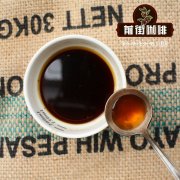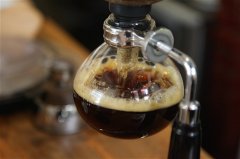Introduction to Norandino Coop Nolandino Cooperative Information Story of Peruvian Coffee Brand Northern Highlands

Professional coffee knowledge exchange more coffee bean information please follow the coffee workshop (Wechat official account cafe_style)
Peruvian Coffee Nolandino Cooperative
□ Coop Norandino (formerly known as CEPICAFE) was founded in March 1995 and has 200 members. Today, the group has grown into a secondary non-profit organization representing coffee and sugar cane producers in the Piuran Mountains in northeastern Peru. The main goal of Norandino is to sell 100% of its coffee to the professional market, to strengthen its organization, and to build respectful and collaborative business alliances with its international buyer network.
Through the integration of member organizations under the umbrella of Narandino, producers are now active and respected agents for sustainable development in the region. They work together to improve the quality and overall production of organic certification, and increase its export volume from 550m2 in 1997 to nearly 40000 sq m, entering professional markets in North America, Europe and Asia. Farmers also have access to financing and development projects. This has promoted the diversification of its production base, including a range of products, from panela (raw brown sugar), jam and cocoa, to handicrafts and tourism.
Over the past few years, Coop Coffees has been working with Norandino to revive traditional natural process coffee in the Canchaque region of northern Piura. This process witnessed the first successful results of Norandino and member cooperative Jose Gabriel Condorcanqui during the 2012 harvest. At that time, farmers around Coyona produced three small batches of naturally processed coffee.
"before 1990, almost 100% of Sierra Piurana coffee was a natural process," says Santiago Paz, Norandino manager. "this Canchaque coffee is famous for its unique flavor."
The producers themselves say that reviving the cafe Canchaque is a sentimental marketing move that creates a unique niche and distinguishes the region as Peru's only high-quality, unwashed coffee producer. This very special prepared coffee features its always sweet tropical fruit and caramel flavors, complete body and bitter cocoa taste, and is now a stable product for our roasters / members.
Cooperativa Agraria Cafetalera Jose Gabriel Condorcanqui, located in Coyona, is one of the oldest cooperatives in the region-founded on November 4, 1969 (named after the indigenous hero Tukamaro II, who led the rebellion against the Spaniards on November 4, 1779).
A total of 200 members are distributed in five casilleros, which represents the vast majority of the local population in the region. Among the members, 100 producers live in the town of Coyona, and coffee fields are located between 1000 and 1600 meters above sea level. Such proximity and cohesion are rare in rural cooperatives and provide their members with greater community impact and development opportunities.
Coop Candorcanqui exports its coffee through Coop Norandino, an umbrella organization that provides marketing, financing and technical training needs for cooperative members.
Peru, the northern highlands. Nolandino cooperative
Peru Norandino Coop
Peru Norandin Logo (Nolandino Cooperative, Peru)
□ producing area: the highlands of northern Peru
□ producer: Nolandino Cooperative
□ variety: Typica,Bourbon,Cattura
□ treatment: washing
□ certification: organic and fair trade certification (organic and FTO)
□ flavor description: caramel, milk chocolate, vanilla, mellow and solid, delicate and greasy, with a hint of citrus flavor
□ this batch of coffee beans from the highlands of northern Peru are produced by the Nolandino Cooperative (Norandino Coop). The Nolandino Cooperative, located in the foothills of the western Andes in Peru, was founded in 1995 and has successively obtained organic and fair trade certifications. at present, the organization has about 6600 smallholder members, with an average planting area of about 1.8ha per smallholder at an altitude of 1200m to 1500m, with Typica, Bourbon and Cattura as the main varieties.
Important Notice :
前街咖啡 FrontStreet Coffee has moved to new addredd:
FrontStreet Coffee Address: 315,Donghua East Road,GuangZhou
Tel:020 38364473
- Prev

Introduction of Injerto Manor Incht Guatemala Coffee Flavor
For the exchange of professional baristas, please pay attention to the coffee workshop (Wechat official account cafe_style) Incht Manor, located on the Guatemala-Vivette Nanguo Plateau, is a farm with a long history, covering an area of 720 hectares and an elevation of about 15002000 meters above sea level.
- Next

Peru's first COE Competition-introduction to the Source of Information Story of Amazon boutique Coffee Cooperative
Professional coffee knowledge exchange more coffee bean information please follow the coffee workshop (Wechat official account cafe_style) Peruvian Coffee Excellence Cup Award-Amazon boutique coffee cooperative, the northern mountains of the Peruvian border, not only mysterious and year-round clouds, there are a lot of high-quality organic coffee. A major event in the coffee circle in 2017: Peru held the first Outstanding Cup Competition.
Related
- Does Rose Summer choose Blue, Green or Red? Detailed explanation of Rose Summer Coffee plots and Classification in Panamanian Jade Manor
- What is the difference between the origin, producing area, processing plant, cooperative and manor of coffee beans?
- How fine does the espresso powder fit? how to grind the espresso?
- Sca coffee roasting degree color card coffee roasting degree 8 roasting color values what do you mean?
- The practice of lattes: how to make lattes at home
- Introduction to Indonesian Fine Coffee beans-- Java Coffee producing area of Indonesian Arabica Coffee
- How much will the flavor of light and medium roasted rose summer be expressed? What baking level is rose summer suitable for?
- Introduction to the characteristics of washing, sun-drying or wet-planing coffee commonly used in Mantenin, Indonesia
- Price characteristics of Arabica Coffee Bean Starbucks introduction to Manning Coffee Bean Taste producing area Variety Manor
- What is the authentic Yega flavor? What are the flavor characteristics of the really excellent Yejasuffi coffee beans?

